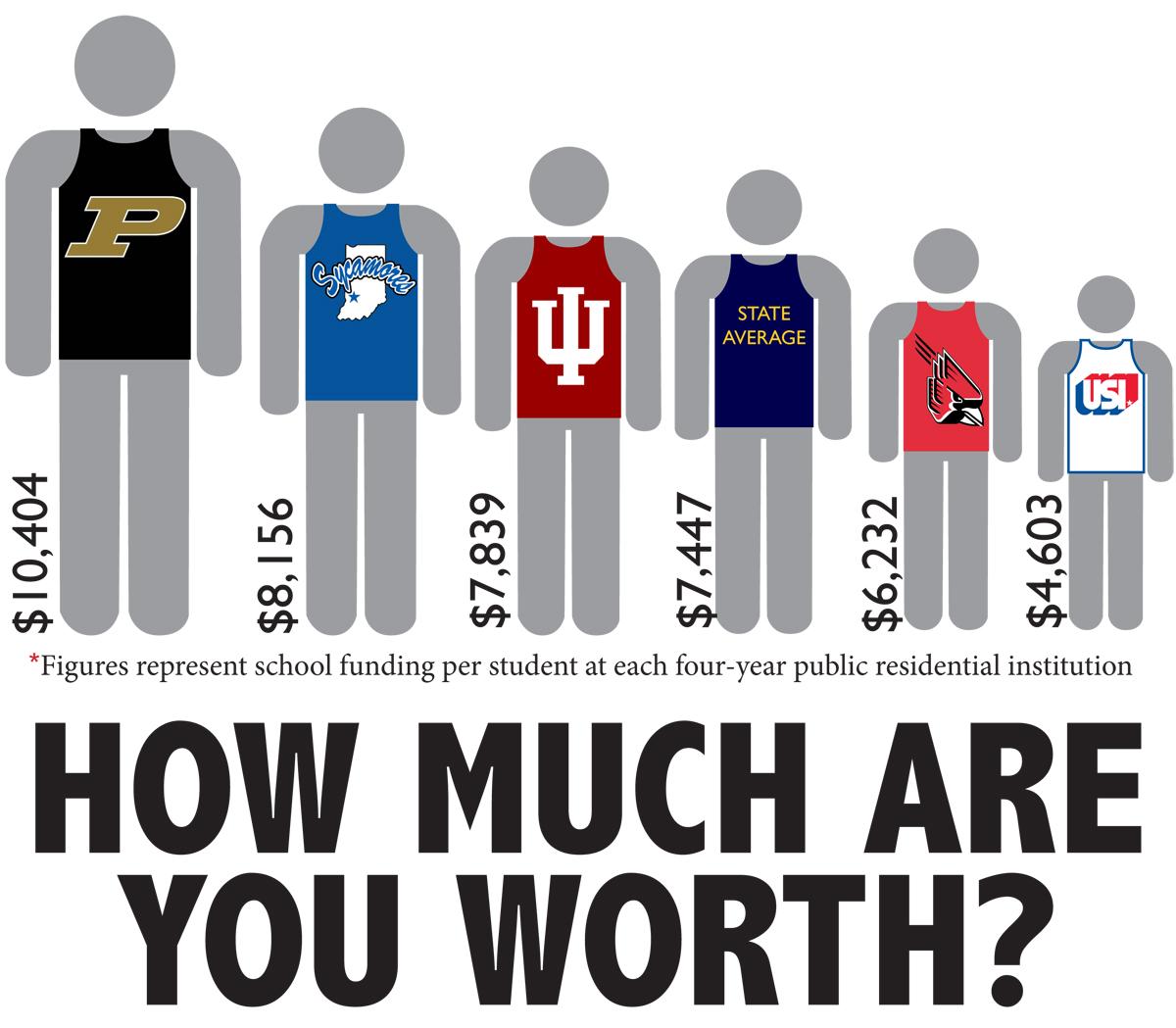
Tuition increases, lack of salary increases for faculty, and funding cuts could be side effects if USI continues to receive low state appropriations.
Bennett spoke to the Indiana legislature’s Ways and Means committee Jan. 10 to ask for an extra $10 million in equity over the next two years.
“USI is facing very serious challenges,” she said. “We’ve always been a frugal institution. We’ve been economizing, and we’re at a point now where we need the additional help.”
The university received $40.1 million from the Indiana General Assembly as general operating revenue in 2012-2013, but Bennett said that isn’t enough with the challenges USI faces.
USI is operating under the same budget as it did in 2008 and is the only four-year college that couldn’t afford a permanent salary increase for faculty and staff, so some of the money from the legislature would be used for that purpose, Bennett said.
Another priority is hiring more full-time faculty and staff, she said.
USI’s operating appropriation per full-time student is lower than any other four-year public residential university in Indiana, and even if the full monetary request is granted, the operating budget would still be 75 percent of the state average, she said.
“The requested $5 million equity adjustment in each year of the biennium still leaves USI as one of the lowest funded institution,” she said.
USI received $4,603 in state appropriations per full-time Indiana student compared to Indiana State University’s $8,156 and Ball State’s $6,232 in 2012-2013 – the reason Bennett is asking for the equity adjustment.
“I think they hear our story,” Bennett said. “They know what our situation is, so that gives me heart.”
She said it is too soon to know if a tuition increase will be necessary.
“We have to understand these are trying times for everybody,” Bennett said. “That’s something we’ll have to look at when we have a better sense of what the legislature will do.”
Rep. Tom Dermody (R) of LaPorte said he is unsure if Bennett’s request can be made fully.
“We recognize that an adjustment needs to be made,” he said. “Maybe not to the level you’re requesting.”
The money USI receives from the state is through the performance funding formulas, which Bennett said USI does well with but said it doesn’t generate enough money.
Cindy Brinker, vice president of government relations, said part of the funding the university recieves through the state comes from how well USI does on performance metrics.
“The state of Indiana develops instructions for us on how we can ask for funding,” Brinker said.
There has been a move toward outcomes-based funding, which means USI gets more money for having higher degree-completion rates and higher four-year graduation rates among other criteria.
To fund the formulas, each four-year public university in Indiana has to contribute a percentage of its operating base into a “pot” and earn that money back, she said. If a school does well, it gets back more than it puts in, but if it doesn’t do well, it gets less than what it put in.
Brinker said the Commission of Higher Education originally stated that each school would have to contribute six percent of its base the first year of the biennium and seven percent the next year, but the commission reevaluated and has recommended the state invest more money, with each school still putting money in the pot.


